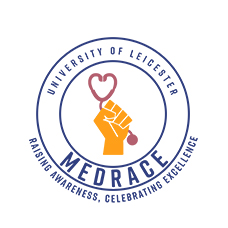College of Life Sciences
How can I start making change?
What can I do to challenge exclusions as an educator?
The questions below allow us to reflect on changes we may want to consider in developing a more racially inclusive curriculum. Also see further resources.
Delivery
- Do we use (only) white male mannequins, photos and teaching aids?
- Do we show signs and symptoms of disease for a range of skin colours?
- Are our case studies inclusive? Do they represent other (protected) characteristics and intersectionality?
- Are we ensuring our learning environments are accessible to all students (and not inadvertently excluding some?)
- Are we using outdated terminology? (e.g. Caucasian)
Content
- Do we highlight that some developments used unethical practices e.g. J.M.Sims; Tuskegee experiment?
- Do we teach who decides health research agendas nationally and internationally?
- Do we include differences in health for different ethnic groups whilst also ensuring that students are aware that race is a social – and not a biological – construct? (Read more)
- Is our teaching on history and developments in medicine truly global (and not just Renaissance/Graeco-Roman)?
Assessment
- Are our assessors (including externals) and simulators drawn from a broad range of backgrounds? Do they receive training in cultural humility?
- Are we including EDI teaching in question-writing training? Do assessment scenarios draw upon stereotypes of e.g. black women with cervical cancer1 or South Asian men with TB*? Are such individuals included in scenarios where ethnicity is irrelevant to their presentation/diagnosis?
- Are case studies diverse and do scenarios actively ensure inclusion/challenge exclusion?
- Is assessment (formative and summative) aligned in its diversity with course delivery and content?
Development
- Do we actively invite speakers – and encourage staff recruitment - from diverse backgrounds?
- Are staff co-developing curricula and the learning environment with students to ensure the (usually greater than staff) diversity of the student body is reflected therein2?
- Is inclusivity an integral theme across all aspects of learning and the learning environment3?
- Are we comfortable discussing the impacts of (structural and interpersonal) racism on medical education4 and healthcare?
- Do we actively promote an anti-racist curriculum?
References
1. Shirley MH, Barnes I, Sayeed S, Finlayson A, Ali R. Incidence of breast and gynaecological cancers by ethnic group in England, 2001-2007: a descriptive study. BMC Cancer. 2014;14:979.
2. Konings KD, Mordang S, Smeenk F, Stassen L, Ramani S. Learner involvement in the co-creation of teaching and learning: AMEE Guide No. 138. Med Teach. 2021;43(8):924-36.
3. Forrest D, George S, Stewart V, Dutta N, McConville K, Pope L, et al. Cultural diversity and inclusion in UK medical schools. Clin Teach. 2022.
4. Kmietowicz Z. Are medical schools turning a blind eye to racism? BMJ. 2020;368:m420.
*The greater incidence of the former is simply not observed epidemiologically in the UK and whilst relative rates of TB are higher amongst non-white ethnic groups, the absolute number of cases of TB in the UK will of course be higher in the white population.
